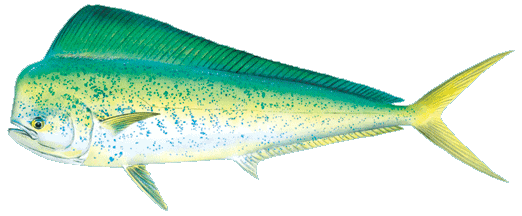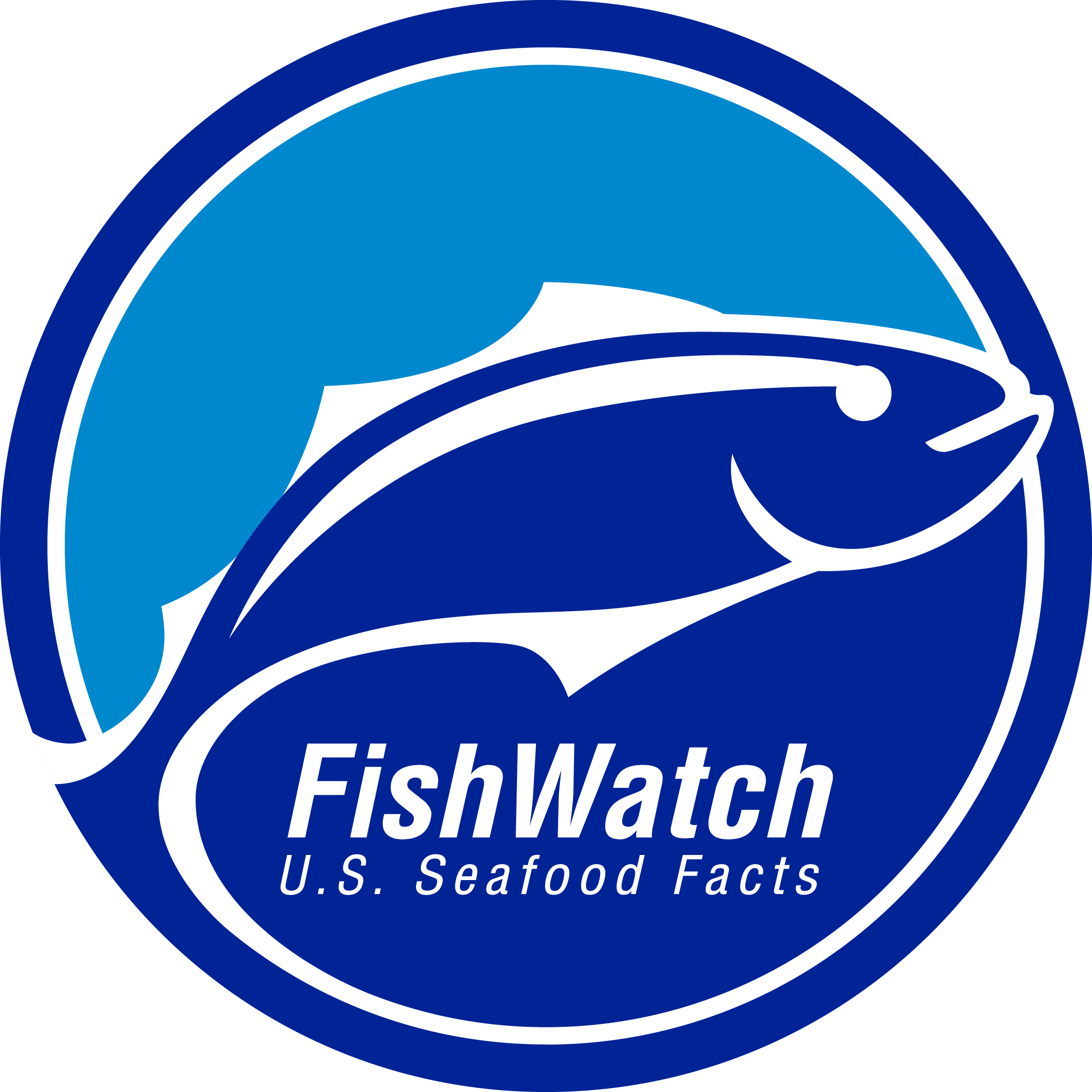
MAHIMAHI
Scientific Name: Coryphaena hippurus
Hawaiian Name: Mahimahi
Japanese Name: Shiira
The Hawaiian name Mahimahi has become the common name for this fish in the U.S. When a mahimahi takes the hook, its colors are brilliant blue and silver dappled with yellow.
Mahimahi is thin-skinned with firm, light pink flesh. It has a delicate flavor that is almost sweet. Hawaii’s Mahimahi is a highly-regarded product which is best eaten when fresh. Local Mahimahi is superior in quality to the available substitutes — lower-priced fresh mahimahi from Latin America and imported frozen fillets from Taiwan and Latin America.
The supply of locally caught Mahimahi is limited and seasonal considering the high demand for this species. Most of the fish are between 8 and 25 pounds, but larger fish are caught by trollers. Mahimahi over 15 pounds in body weight is the preferred market size. Commercial Mahimahi landings in Hawaii are made by trollers and longliners.
No fish is better known in the up-scale restaurant market than Hawaii’s fresh Mahimahi, which has become synonymous with tourism. Among visitors, is one of the State’s best known fish.
FISHING METHOD
All Hawaii mahimahi are line-caught. Longline boats harvest most of the mahimahi catch in Hawaii. However, mahimahi are also caught by trollers using lures and baits.
SEASONALITY
Although available most of the year, mahimahi catches in Hawaii usually peak in March-May and September-November.
PREPARATION NOTES
Texture: Firm
Flavor: Mild & Sweet
Suggested Preparations: Grilled, Broiled, Sautéed, Tempura
Mahimahi is ideal for a variety of preparations. However, care should be taken not to overcook mahimahi. It should be cooked until it flakes and no longer.
HEALTH & NUTRITION
Hawaii Mahimahi is an excellent source of healthy, extra lean protein. It is also low in saturated fat and low in sodium. It is rich in niacin, vitamin B12, phosphorus, and selenium. Hawaii Mahimahi also provides about 400 mg of omega-3’s (DHA and EPA) per 4 ounce serving of fresh fish. Click here for nutritional labels and claims.
Click here to download a two-page description of this species.
SUSTAINABILITY
Current status: Hawaii mahimahi are being fished sustainably. Hawaii mahimahi population status is not formally assessed but assumed to be stable. Overfishing does not appear to be occurring in the Hawaii fishery. Catch rates indicate that the population is not overfished.

Visit our Sustainability page and the Mahimahi page at NOAA’s FishWatch.gov for more information.
The FishWatch™ emblem is a registered trademark of the National Oceanic and Atmospheric Administration and is used with permission.

